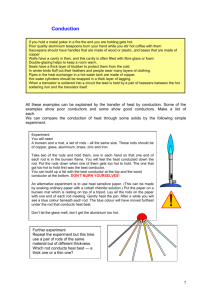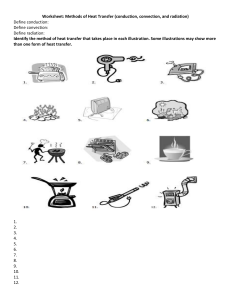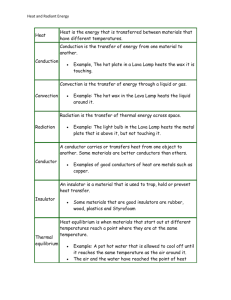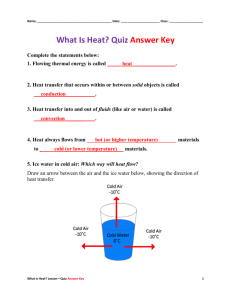Worksheet 1 - practical demonstrations
advertisement
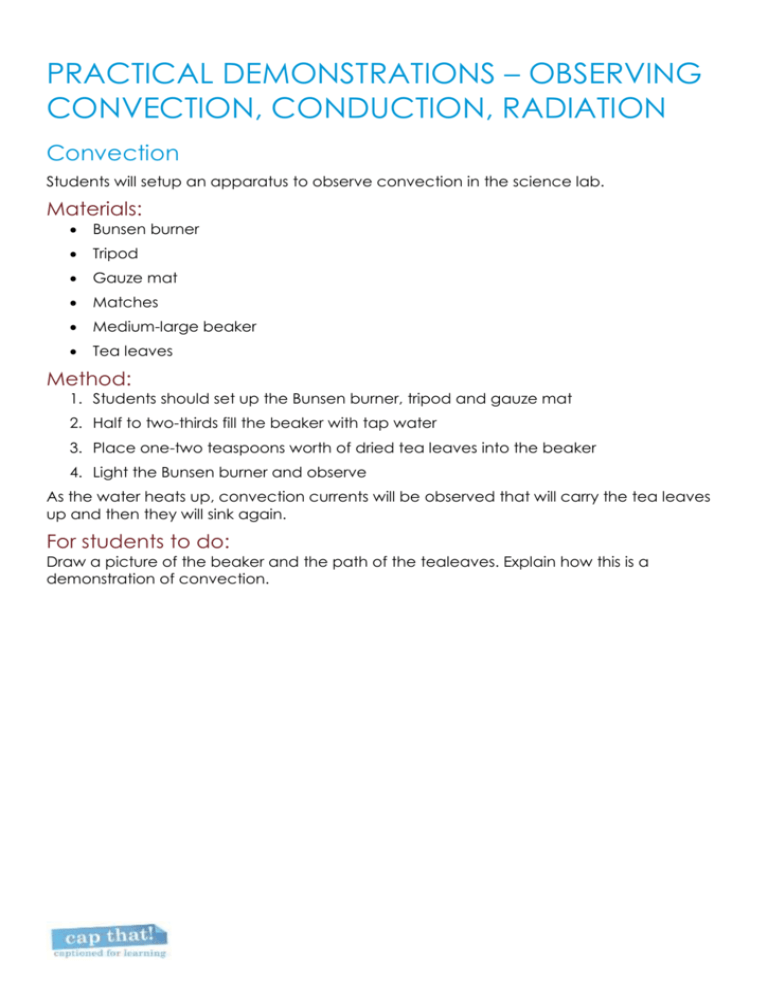
PRACTICAL DEMONSTRATIONS – OBSERVING CONVECTION, CONDUCTION, RADIATION Convection Students will setup an apparatus to observe convection in the science lab. Materials: Bunsen burner Tripod Gauze mat Matches Medium-large beaker Tea leaves Method: 1. Students should set up the Bunsen burner, tripod and gauze mat 2. Half to two-thirds fill the beaker with tap water 3. Place one-two teaspoons worth of dried tea leaves into the beaker 4. Light the Bunsen burner and observe As the water heats up, convection currents will be observed that will carry the tea leaves up and then they will sink again. For students to do: Draw a picture of the beaker and the path of the tealeaves. Explain how this is a demonstration of convection. PRACTICAL DEMONSTRATIONS – OBSERVING CONVECTION, CONDUCTION, RADIATION Conduction Teacher sets up an apparatus to demonstrate conduction in different materials in the science lab. Materials: 2 x retort stands 2 x bosshead and clamp 2 x Bunsen burners 1 x metal rod (e.g. copper) 1 x glass rod (rods should be of same diameter) Wax candle Matches Method 1. Prior to the lesson, the teacher should use the candle to drop small globs of wax onto the rods. There should be 3-5 globs of wax on each rod, approximately 3 cm apart. They should be evenly spaced on both rods. 2. The teacher should set up the apparatus so that the bosshead and clamp are holding the rod to the retort stand, in an area that the students can see 3. A Bunsen burner should be placed under each rod, equal distance from the end. 4. Both Bunsen burners should be lit at the same time, and the heat will transfer along the rods. As the heat is transferred, it will cause the wax drops to melt and fall off. The wax will fall from the metal rod before the glass rod, because it is a better conductor of heat than glass. For students to do: Draw a picture of one of the rods, showing the source of heat, and the direction of heat transfer. They should explain why this is an example of heat conduction. Extra work: Students should answer the question: Why is it important to have equal diameters for the rods, same amount and size of wax globs, and equal spacing along the rod? PRACTICAL DEMONSTRATIONS – OBSERVING CONVECTION, CONDUCTION, RADIATION Radiation Students will observe radiant heat from a light or a radiant heater and explain this in terms of heat transfer. Materials: Light bulb, or radiant heater Method: 1. Set up the light bulb or radiant heater so it is radiating heat. 2. Students should place their hands near the edge of the light or heater. Advise students to ensure that they do not touch the apparatus – it will burn them. Students to do: Students should draw a picture of the light bulb/heater and draw the direction of heat transfer, explaining why this is an example of radiant heat.
